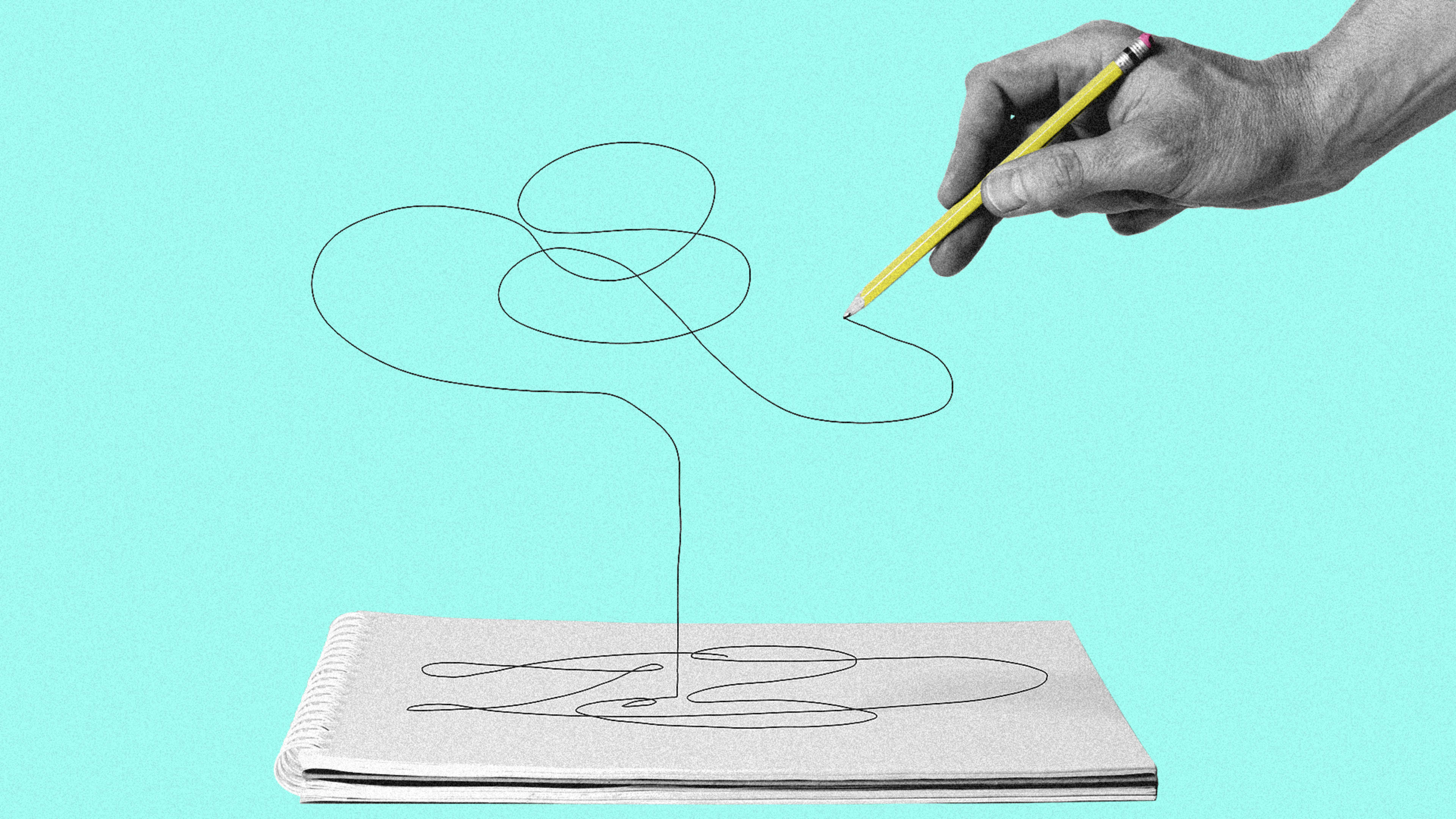As we get older, our memory really does get worse. It can be hard in our private lives and professional ones. But new research from the University of Waterloo has discovered a compelling fix: By drawing something, rather than taking written notes, our memory performs as well as that of someone decades younger.
Truthfully, though, people of all ages remember better by drawing. So if you want to remember something, draw it.
“Episodic memory (retention of new information) typically declines as people age, due to deterioration of critical brain structures involved in memory encoding and retrieval, such as the hippocampus and frontal lobes,” explains Myra Fernandes, professor at the Department of Psychology, University of Waterloo, over email. “However, we know that visuo-spatial processing regions of the brain, involved in representing images and pictures, are mostly intact in normal aging–given this, we predicted that drawing could be particularly beneficial in this population, as it relied on brain regions that were intact in the aging brain.”
It wasn’t just a hunch. Previous research has found that drawing boosts our ability to remember information. And Fernandes’s own lab had already run a study that found undergraduates recalled information from drawn notes better than written ones. Crucially, that recalled information could even be highly specific. By drawing a concept like “photosynthesis” and “isotopes,” the students didn’t just remember what these things looked like. They were actually better at recalling the textbook definitions of these words, too–details that weren’t part of the drawings at all.
In the latest study, researchers challenged a group of college-aged adults and a group of older adults to remember as many as 30 words across several tests. They weren’t told that this would be a memory task. Instead, as a computer read words out loud, they were either instructed to write the word over and over, to draw it, or in some cases, write adjectives about the word like “furry” or “gray” for mouse. All sorts of controls were considered–the words were chosen carefully and randomized across subjects. Participants were also distracted during a break in the test, to ensure that people wouldn’t be using their own memory techniques to store the information.
At the end, subjects had to list as many words as they could remember. Across all trials and age groups, people remembered the drawn words the most. Seniors, however, experienced a particularly large boost–nearly closing the memory gap with their young peers.
So how can you take advantage of drawing to boost your memory? It’s as simple as it sounds. You just have to draw. “Drawing a picture of some groceries you need to pick up later, or the meal you are planning to make, should result in that information being remembered much better later on than if it were written,” Fernandes says. “Furthermore, the benefit does not seem to depend on participants’ artistic ability, as we examined the quality of drawings and found that it was unrelated to the size of the gains in memory.”
Another plus? You don’t need to spend much time on your memory masterpieces. Subjects demonstrated memory boosts after sketches that took just four seconds to draw. So do brain a favor: Grab that pen at your desk, and draw a quick sketch of what you learned here.
Recognize your brand’s excellence by applying to this year’s Brands That Matter Awards before the early-rate deadline, May 3.
